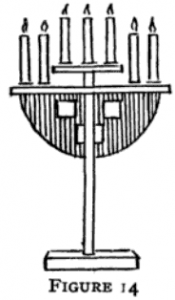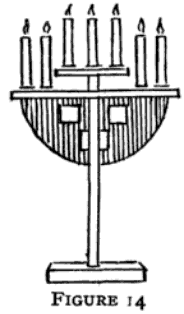This is the second excerpt from a chapter concerning prop-making in “Shakespeare for Community Playersâ€, by Roy Mitchell. Be sure to check out the first part, concerning furniture.
Tableware

Tableware, such as trenchers, bowls, flagons, goblets, jars, mugs and vases, may be made out of heavy crockery stoneware, and glass utensils painted or gilded. A jaunt through a crockery store will reveal a host of fine decorative pieces at a very low price which can be treated by the maker of accessories to give fine results. If it is desired to use liquid in a glass vessel, any gilding, silvering or painting should be put on the outside. If the glass is not intended for use with liquid, paint on the inside is best, because the glass gives a burnished surface. For gilding, do not buy the prepared leaf. It is too expensive. Buy the metallic powder, mix it with banana oil and apply with a soft brush. These metal powders may be had in several tones of gold, silver, copper, rose and green. With so ample a palette of colours the propertymaker need not stop at solid tones, but may secure bold inlaid and modelled effects in his metal table-ware.
Under the heading of table utensils should come foods. The best material for soup is sawdust or birdseed, which should be served with a ladle. Chops, steaks and roast meat may be made of brown bread cut to the desired shape. A fowl may be sculptured from a stale loaf of brown bread with a sharp knife, and made to steam by pouring boiling water over it. An appetizing looking dish is made by heaping a trencher high with white bread and brown crusts, and drenching it with boiling water just before it is carried on. Cold tea in various degrees of dilution will serve for most liquors, but if red wine is required, water may be safely coloured with the red colouring matter used by confectioners. Soda waters are not advisable for wines. They cause “frog in the throat.”
Cheap wooden kitchen-ware, bread-boxes, salt-boxes, knife and fork trays, hinged together and so on, may be painted or gilded, or both, to make caskets, table-boxes, despatch-boxes, and jewel-cases.
Reprinted from Shakespeare for Community Players, by Roy Mitchell, J.M. Dent & Sons ltd., 1919 (pp 62-63)

